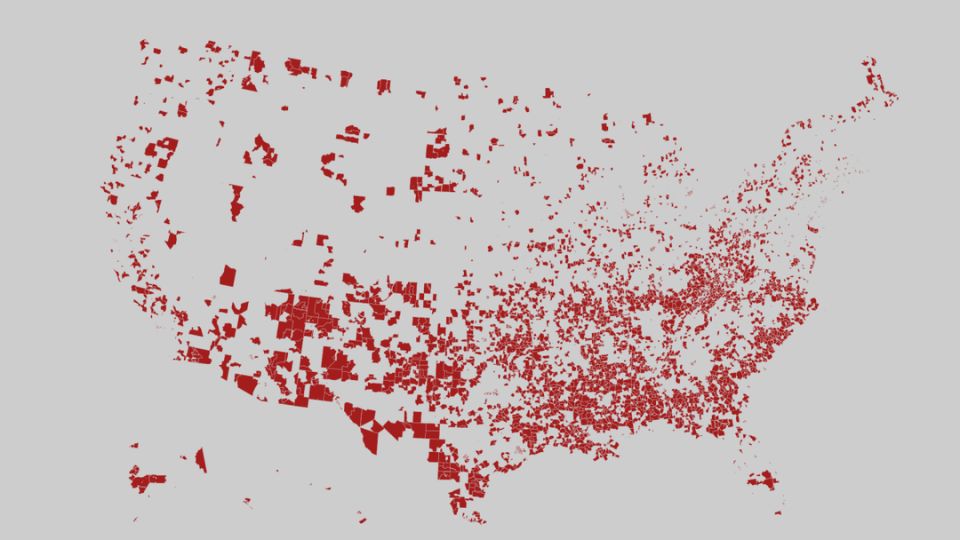There is a noticeable difference in the US economy: it is still growing and inflation is decreasing, but many Americans feel pessimistic and uncertain about the future.
“I believe that people are simply unsure,” President Biden recently stated in an exclusive interview with Yahoo Finance. “That’s why it’s important for us to stay focused, remain determined, and keep creating these amazing job opportunities.”
To understand the disconnect, we need to take a closer look at the states, cities, and towns that are the backbone of the US economy. According to the Distressed Communities Index by the Economic Innovation Group (EIG), the local economies in America had not fully recovered from the impact of the COVID-19 pandemic by 2023.
Based on information from EIG, which uses data from the US Census Bureau, it is estimated that around 52 million Americans reside in a zip code that is considered to have low economic well-being. The number increased from 50 million in 2018.
Distress scores are determined by considering various factors and assigning them different weights. The factors that are considered include the following: the number of residents who have completed high school, the poverty rate, the number of adults who are not employed, the rate of vacant housing, the ratio of median income, changes in employment, and changes in the number of businesses.
EIG found that in the past few years, cities all over the country have been getting worse off, while the suburbs around them are getting better off.
According to August Benzow, a research lead at EIG, almost every neighborhood in Cleveland is struggling, but there are also many prosperous suburbs.
Also Read: Nevada City Has the Highest Unemployment Rate In The State
The Pandemic has Exacerbated this Trend
The size of a region’s population is usually related to the health of its economy. During the pandemic, there were significant changes in population across the country.
Urban counties with a population of 250,000 or more, as defined by EIG, have suffered significant losses: From July 1, 2020, to July 1, 2021, the total number of residents in those counties decreased by 812,000.
Based on the same report, in 2022, exurban and suburban counties experienced the highest growth rates. This was due to a significant increase in domestic migration during the early stages of the pandemic. In 2021, 931,000 people were added to the same counties. In 2022, an additional 832,000 residents were added.
“The pandemic has made this trend worse. Now people can live farther away from cities and still work remotely or in a hybrid model,” Benzow explained.
A recent statement from Goldman Sachs restated this idea: “People who live in the United States have been moving away from the biggest cities. About half of them are moving to suburban areas with populations between 250,000 and 1 million.” The most recent data shows that the change in population that started at the beginning of the pandemic, which was influenced by concerns about the virus and the ability to work remotely, has not only not gone back to how it was before, but has actually continued until mid-2023.
The pandemic showed that there are big differences in wealth between different groups of people. Those who had enough money were able to leave cities and move to suburbs. This meant that lower-income people were left behind in the cities.
Take a look at Fort Worth, Texas. Fort Worth is the 13th largest city in the US based on population. It experienced a growth of 4.1% between 2020 and 2023, which means it gained nearly 1 million residents.
However, approximately 32.2% of the residents live in zip codes that EIG has determined to be “distressed,” while 29.2% live in zip codes considered “prosperous.” The downtown area of the city is the most troubled compared to the more comfortable and prosperous areas on the outskirts.


Leave a Reply